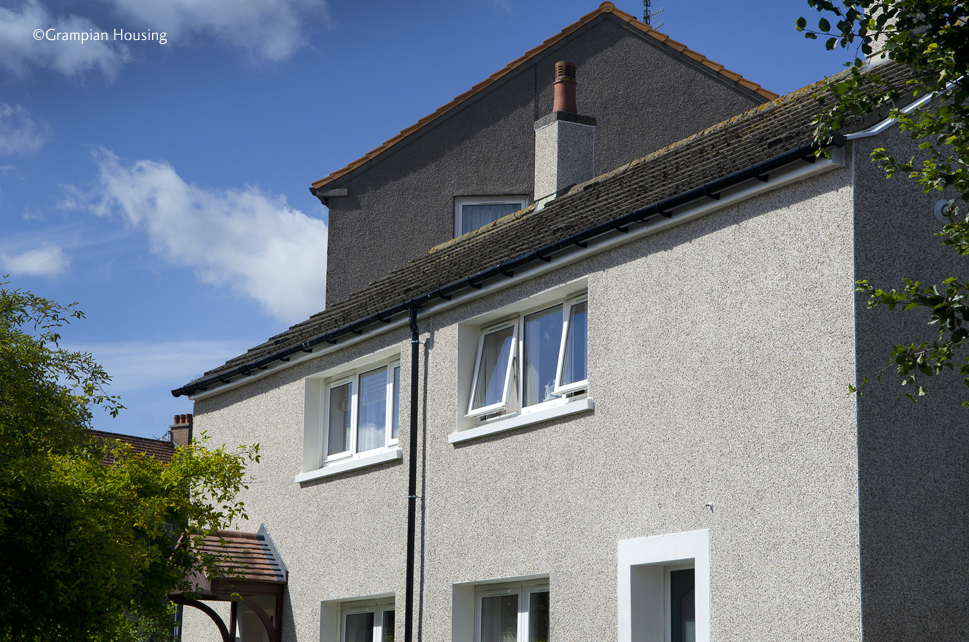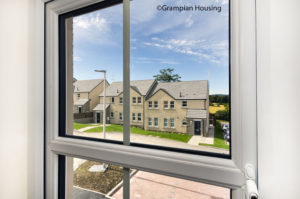
Zhan McIntyre, policy lead at the Scottish Federation of Housing Associations (SFHA), discusses why the end of Right to Buy in Scotland was not a moment too soon.
The Scottish Federation of Housing Associations (SFHA) and its members long campaigned for an end to Right to Buy in Scotland, and we warmly welcomed the end of the policy on the 31st July 2016.
Over its 34-year history, Right to Buy has led to a considerable reduction in the availability of truly affordable social rented homes. Now that it has come to an end, social landlords in Scotland have the greatest opportunity in a generation to increase the supply of affordable housing for social rent, which will help to address the need for around 60,000 new affordable homes across Scotland, as assessed by a research team led by Sheffield Hallam University[1].
Right to Buy was, in its time, a popular policy. It gave eligible council tenants and, later, housing association tenants, the right to buy their home at heavily discounted rates. This was made possible because of the investment in housing made by taxpayers in previous generations.
What made this policy so harmful was the fact that, while receipts from the sale of these social homes in Scotland were re-invested into affordable housing provision, the generous discounts meant that receipts did not begin to cover the cost of building replacement housing. So, while the Right to Buy benefitted a comparatively small number of individuals, it has been at the expense of the public good and contributed to the growing intergenerational inequality in terms of access to affordable quality housing.
Another important legacy of the policy is the incredibly challenging environment for effective asset management. A lack of awareness from many former tenants about the responsibilities of home ownership, together with unhelpfully vague title deeds, has made asset management particularly challenging in multi-ownership blocks.
Owners often lack the finances or are unwilling to fund their share of investment and repairs works, impacting on integrity of our housing stock. It has certainly made compliance with communal elements of the Scottish Housing Quality Standard impossible for some social landlords.
Case study: Grampian Housing Association
The legacy of Right to Buy is illustrated well in the North East of Scotland, where Grampian Housing Association operates. There is a significant lack of affordable housing here, and the policy no doubt contributed to this, often stripping away supply of amenity bungalows and family sized houses in areas of high housing demand.
 Large-scale voluntary housing stock transfer by Scottish Homes contributed to Grampian Housing Association’s growth in the late 1990s. Since, then the association has lost 121 of its 3,000 properties to Right to Buy throughout Aberdeen, Aberdeenshire and Moray. While the introduction of Pressured Area Status protected the association against further loss of its own new-build properties, stock transfer tenants had the Preserved Right to Buy.
Large-scale voluntary housing stock transfer by Scottish Homes contributed to Grampian Housing Association’s growth in the late 1990s. Since, then the association has lost 121 of its 3,000 properties to Right to Buy throughout Aberdeen, Aberdeenshire and Moray. While the introduction of Pressured Area Status protected the association against further loss of its own new-build properties, stock transfer tenants had the Preserved Right to Buy.
Furthermore, when the former Scottish Special Housing Association sold properties to sitting tenants, it did not include any responsibilities for the maintenance of estates on the assumption that these estates would ultimately be adopted by the local authority but this has not happened in the majority of cases.
As a result of the Right to Buy and poor title deeds, the association now has the responsibility for the open space maintenance of several large public space areas. For most of these, little or no rental income is paid for, and there are no formal factoring arrangements in place with the owner-occupiers. This is in areas where almost 100% of the properties are owned privately and these owners have no obligation to contribute towards the upkeep of footpaths, off-street car parking and grounds maintenance.
Neil Clapperton, Grampian Housing Association chief executive, says: “Demand continues to far outweigh supply and waiting lists are in the thousands. Our greatest concern is with the legacy issues arising from the Right to Buy for the stock transfer property and estates. The abolition of this policy is just a case for us of ‘closing the gate after the horse is bolted’ and does not really deal with the legacy issues.”
 Overcoming the legacy
Overcoming the legacy
More work is required to overcome the legacy of Right to Buy and safeguard the built environment for generations to come. Going forward, we have a chance in Scotland to focus our housing policy on the supply of well-designed, energy-efficient social rented homes that are truly affordable to people on low incomes.
SFHA campaigned successfully with partners for a housing investment level that can deliver homes for affordable rent, and the Scottish Government responded by setting a new target of delivering 50,000 affordable homes over the next five years, including 35,000 for social rent.
Whilst meeting this target will not be without its own challenges, such as the supply of land, funding of infrastructure, effectiveness of the planning system and human capacity, we now have an opportunity to increase the supply of affordable homes to meet existing and future housing need and, in turn, we can help some of Scotland’s poorest and most vulnerable people.
Affordable and social housing represents more than just a home — people’s life chances, health and wellbeing are improved by securing a high quality, energy-efficient, affordable home. So we’re glad to see the end of the Right to Buy in Scotland. Its demise has not come a moment too soon.
[1] Powell, R. et al (2015) Affordable Housing Need in Scotland Final Report








